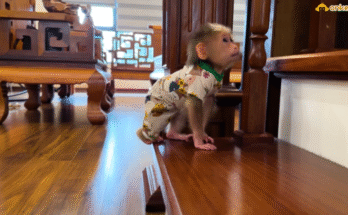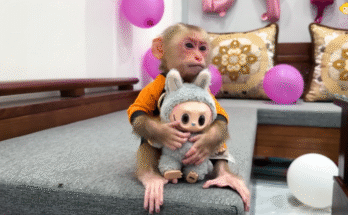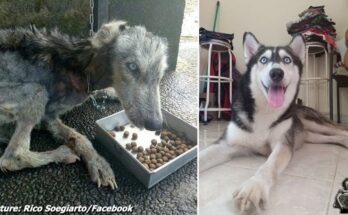If you’ve ever tried putting a golden retriever on a diet, you know exactly where this story is going. My dog, Max, has always had a healthy appetite — and by “healthy,” I mean he would eat anything that remotely resembled food. Socks? Yes. Fallen spaghetti noodles? Absolutely. The entire Thanksgiving pie? Don’t remind me.
Max is seven years old now, which in golden retriever years means he’s beginning to slow down a bit. Our vet, Dr. Holly, gently pointed out during our last visit that Max had “a little extra love around the middle.” She didn’t say the F-word — fat — but we both knew what she meant. His usual bounding energy had dwindled, and those long walks became a shuffle of protest rather than a gallop of joy.
“Time to switch him to a weight-control formula,” she said, handing me a glossy brochure full of smiling fit-looking dogs and bowls of kibble that looked like cardboard.
I nodded, guilt riding shotgun in my heart. I’d known Max was putting on some pounds, but it’s hard to say no to a face like his — soft, caramel-colored eyes, floppy ears, and that signature golden grin that seemed to say, “One more treat won’t hurt, right?”
The first morning of his new diet, I tried to put on a brave face. I set his bowl down with a cheery, “Bon appétit, Max!” and waited.
Max sniffed the kibble. He looked up at me. Then back at the food. Then at me again. It was a slow-motion moment of betrayal.
His tail gave a single wag — confused, maybe hopeful. I watched as he poked the new food with his nose, then looked around as if waiting for the real meal to appear.
When nothing changed, he sighed — an honest-to-goodness sigh — and flopped onto the floor beside the bowl, his head resting dramatically on his paws. That’s when I knew this wasn’t going to be easy.
For the next few days, Max went on what I can only describe as a hunger strike. He ate just enough to stay alive, then spent the rest of the day lying in protest. He refused to perform his usual tricks. No high fives, no rollover, no “speak.” He became the canine version of a moody teenager.
I tried everything. I warmed the food slightly to make it smell more “appetizing.” I mixed in tiny spoonfuls of low-sodium chicken broth. I even sat beside him and pretended to eat a handful of kibble myself (regretfully, that did not go well). Max wasn’t fooled.
One afternoon, I found him in the kitchen staring longingly at the pantry door where his old treats used to live. He didn’t bark. He didn’t paw. He just stared like a poet remembering lost love.
The guilt was eating me alive. But the irony? Max wasn’t.
Then came the day of the Great Garbage Incident.
I was in a meeting on Zoom when I heard an unholy crash from the kitchen. I sprinted in to find Max with his head deep inside the overturned trash bin, tail wagging furiously. Chicken bones, used napkins, and what I think was a half-eaten burrito were scattered around him. His eyes met mine, wide and guilty, his face dusted with what might have once been powdered sugar.
“MAX!” I yelled, as he gave a single guilty bark, then tried to hide behind the table — tail still wagging, still hopeful I might forget what I’d just seen.
That night, he refused to look at me. I imagine in his mind, he thought I had forced him to become a scavenger, a kitchen outlaw, the Robin Hood of garbage bins.
I called Dr. Holly the next day, explaining the trash fiasco and the hunger strike.
She chuckled gently. “It’s normal. Goldens are dramatic eaters. But stick with it. He’ll adjust. Try making mealtime more exciting — puzzle bowls, frozen carrot treats, or even turning meals into a game.”
I took her advice to heart. I bought a slow feeder bowl that looked like a maze. At first, Max looked at it like it was an alien device, then discovered it made eating slightly more entertaining. I added more playtime before meals, used baby carrots as treats, and even started hiding bits of his new kibble in different parts of the yard like a treasure hunt.
Slowly, Max began to adjust. He’d still cast longing glances at the pantry and occasionally sigh dramatically after finishing his meal, but he no longer skipped food. His energy picked up a bit, and our walks lasted longer. He rediscovered his love for tennis balls, and his once-puffy belly started slimming down.
Two months into the new diet, Max did something that made my heart swell — he wagged his tail when I poured his new kibble. Not as wildly as he had for roast chicken or peanut butter bones, but enough to tell me he was okay.
And one evening, while sitting beside him on the porch, I noticed something else: he was faster again. Lighter on his paws. When a squirrel darted across the yard, Max actually gave chase, tail up, ears back, golden fur flowing like a lion in a shampoo commercial. He didn’t catch the squirrel, of course (he never does), but he barked triumphantly like he had.
That night, I gave him a special treat: a frozen banana-carrot pup-sicle I’d made earlier. He devoured it and licked my hand as if to say, “Not bad, human.”
We still have the occasional protest. Max is not a fan of kale, for instance, and has learned to expertly spit it out even when I sneak it into homemade treats. But he’s doing better. We both are.
His health improved. Mine too, thanks to all those extra walks. I learned to say “no” when needed — and he learned that love doesn’t always come in the form of bacon strips.
It’s funny — when I first started the diet, I thought I was helping Max. But in truth, he helped me. He reminded me of the importance of patience, of sticking to goals even when things get dramatic (and trust me, golden retrievers know drama). And above all, he showed me that love — real love — sometimes means saying, “No, you can’t have that third treat,” even when it breaks your heart.
So, no, Max was not a fan of his new diet. Not at first. But now? I think he’s made peace with it.
And every once in a while, when he gets a baby carrot, he still does that happy bounce like he used to — as if to say, “Okay, this isn’t steak… but it’s not so bad.”



